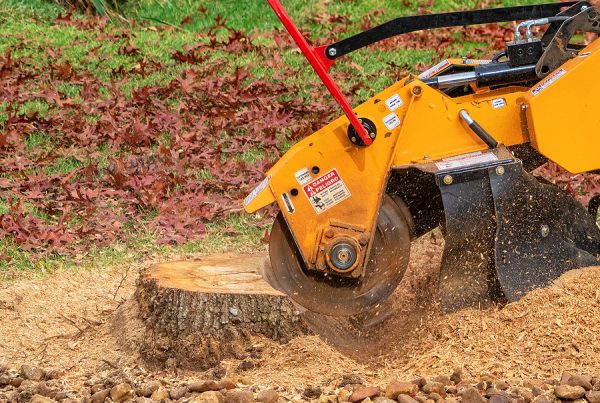Wildfire safety tips matter more than ever for mountain properties near Park City’s ski resorts, and this guide from Canyon Cutters explains every proven tactic—from defensible space creation to post-fire land rehabilitation—that keeps your home, forest, and community safer year-round.
Table of Contents
- Introduction
- Understanding Wildfire Risks in Utah’s Mountains
- Creating Defensible Space
- Structural Hardening & Home Ignition Zone
- Land Management & Fuel Reduction
- Canyon Cutters Fire Mitigation Services
- Emergency Preparedness & Evacuation
- Post-Fire Land Management & Rehabilitation
- FAQs
- Conclusion
Introduction
Park City and Heber City sit in Utah’s wildland-urban interface, where wind-driven embers, drought-stressed conifers, and steep canyon slopes intensify every blaze. Canyon Cutters—locally owned and operated right here—combines fire mitigation services, tree pruning for wildfire prevention in Utah, land clearing for fire protection, and dump truck hauling to deliver practical, year-round home wildfire defense. Use this guide as your blueprint for forest fire safety, mountain property fire mitigation, and wildfire preparedness.
Understanding Wildfire Risks in Utah’s Mountains
Utah’s high-elevation terrain funnels flames uphill quickly, leaving little time for last-minute action. Begin by reviewing localized fire data on the Utah Wildfire Risk Assessment Portal. The NFPA’s Home Ignition Zone model shows how embers ignite structures even when the main flame front is hundreds of feet away. Frequent drought means surface fuels build fast, so tree thinning for fire prevention, regular fuel reduction, and vigilant fire hazard reduction are critical.
Creating Defensible Space
Zone-by-Zone Guidelines
Immediate Zone (0–5 ft)—Keep it non-combustible: gravel, pavers, or metal edging. Clean gutters weekly and install ember-resistant vents.
Intermediate Zone (5–30 ft)—Apply firewise landscaping, remove ladder fuels, and use wood chipping services to recycle slash into mulch.
Extended Zone (30–100 ft)—Create strategic firebreak installation, prune mature crowns, and space conifers at least 10 feet apart to comply with Utah Fire Marshal wildfire safety regulations.
Advanced Tips for Luxury Mountain Homes
High-value chalets often feature cedar decking that invites embers; swap it for non-combustible materials recommended by the Insurance Institute for Business & Home Safety. Add ignition-resistant plantings, and automate irrigation so defensible space stays green through late summer.
Structural Hardening & Home Ignition Zone
The home ignition zone blends landscaping with building upgrades:
- Metal roofing with Class A ratings endorsed by IBHS.
- Fire-caulk at siding gaps to block embers.
- Steel or concrete patios to replace wood decks, reducing property fire protection risks.
- Dual-pane tempered glass to prevent heat breakage.
These improvements strengthen insurance positions and foster fire-adapted communities.
Land Management & Fuel Reduction
Utah’s Division of Forestry, Fire & State Lands outlines best practices for fuel reduction. Schedule controlled burns in late spring or fall—see the U.S. Forest Service prescribed-fire page for environmental benefits. Canyon Cutters supplies trained crews and dump truck hauling to remove slash piles that could ignite later. Our tree pruning for wildfire prevention opens canopies, while stump grinding eliminates hidden embers.
Canyon Cutters Fire Mitigation Services
Unlike fly-in contractors, Canyon Cutters lives where you live—so we tailor solutions for ski resort fire safety and mountain property fire mitigation:
- Wood Chipping and Land Management for fuel reduction.
- Firebreak Installation and Storm Cleanup for year-round fire hazard reduction.
- Snow Removal to keep emergency vehicles moving.
- Property Rehabilitation after wildfire damage, including erosion control and trail clearing for ski-in & ski-out lots.
Emergency Preparedness & Evacuation
Ready.gov stresses the need to plan two evacuation routes and practice them with family and pets. Stock NIOSH-approved N95 respirators, headlamps, and hard-copies of contact lists. During active smoke, monitor Utah DEQ air-quality alerts for real-time particulate data. Canyon Cutters teams assemble wildfire preparedness kits for Park City residents, ensuring each item meets local guidelines.
Post-Fire Land Management & Rehabilitation
Once the flames pass, slopes can erode. The NRCS erosion-barrier guide shows how straw wattles and log check dams stabilize soil until vegetation returns. Canyon Cutters’ property rehabilitation services after wildfire damage also include drainage construction solutions to redirect runoff—critical for homes perched above ski runs. A follow-up wildfire risk assessment refines future defensible space creation.
FAQs
What is the fastest way to improve wildfire safety? ▼
Begin with a five-foot non-combustible zone, then call Canyon Cutters for tree thinning for fire prevention across the rest of your lot.
How often should I schedule fuel reduction? ▼
Every two to three years, or immediately after heavy storms that add ladder fuels.
Is a prescribed fire safe near a ski resort? ▼
Yes—when coordinated through state permits and weather windows identified by Utah FFSL and Canyon Cutters professionals.
What mask works best for wildfire smoke? ▼
A fit-tested N95 respirator—see CDC guidance—offers reliable particulate filtration during smoke events.
What post-fire erosion control works on steep slopes? ▼
Log erosion barriers, straw wattles, and rapid hydro-mulch seeding hold soil until native plants re-establish.
Conclusion
Applying these wildfire safety tips—paired with Canyon Cutters’ local expertise—turns risk into resilience. Together we can keep Park City and Heber City’s ski-country neighborhoods thriving, season after season.









